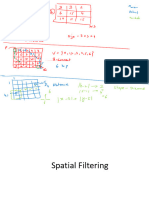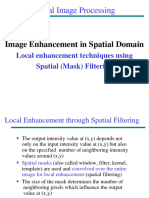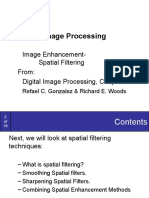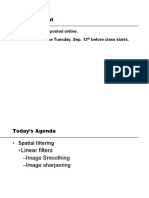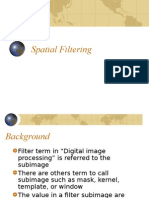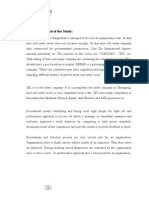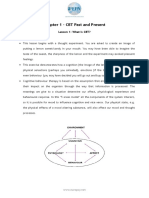0% found this document useful (0 votes)
16 views69 pagesLecture 04
This document discusses spatial filtering in digital image processing, explaining how output intensity values depend on neighboring pixels and the use of spatial masks for local enhancement. It covers various types of filters, including smoothing and sharpening filters, and their mathematical representations, as well as techniques for handling border pixels. The document also introduces the Laplacian filter for edge detection and image enhancement, detailing how to implement it and the resulting effects on images.
Uploaded by
Adeel IjazCopyright
© © All Rights Reserved
We take content rights seriously. If you suspect this is your content, claim it here.
Available Formats
Download as PDF, TXT or read online on Scribd
0% found this document useful (0 votes)
16 views69 pagesLecture 04
This document discusses spatial filtering in digital image processing, explaining how output intensity values depend on neighboring pixels and the use of spatial masks for local enhancement. It covers various types of filters, including smoothing and sharpening filters, and their mathematical representations, as well as techniques for handling border pixels. The document also introduces the Laplacian filter for edge detection and image enhancement, detailing how to implement it and the resulting effects on images.
Uploaded by
Adeel IjazCopyright
© © All Rights Reserved
We take content rights seriously. If you suspect this is your content, claim it here.
Available Formats
Download as PDF, TXT or read online on Scribd
/ 69
